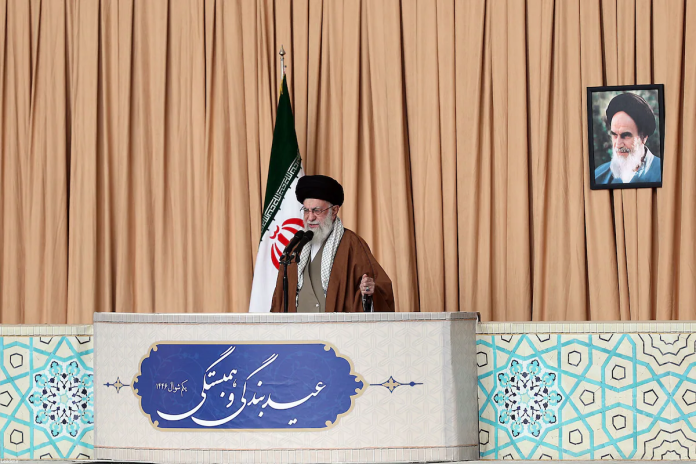Iran activated its missile arsenal and placed forces on high alert following US President Donald Trump’s threat of “unprecedented bombing” if Tehran refused to negotiate a new nuclear deal, according to The Business Standard.
The escalation marks a dangerous tipping point in years of fraught relations, with both sides hardening positions and regional stability hanging in the balance. In a televised interview with NBC News on 30 March, Trump warned:
If they don’t make a deal, there will be bombing. It will be bombing the likes of which they have never seen before.
He also threatened secondary tariffs on Iran and its trade partners, mirroring his 2018–2021 “maximum pressure” campaign.
Iran responded by readying missiles in underground facilities designed to withstand airstrikes, as reported by local media. These include precision-guided systems like the Kheibar Shekan and Ghadr-H ballistic missiles, capable of targeting US-linked assets globally. A senior Iranian military official warned that aggression would trigger a “severe response”, with missiles “loaded onto launchers in all underground cities.”
Collapse of nuclear deal, military buildup
The crisis stems from Trump’s 2018 withdrawal from the Joint Comprehensive Plan of Action (JCPOA), which had curtailed Iran’s nuclear activities in exchange for sanctions relief. Since then, Iran has enriched uranium to near-weapons-grade levels, according to UN monitors.
Trump’s demands for a new deal now include dismantling Iran’s nuclear programme, severing ties with regional proxies, and limiting missile capabilities, terms Tehran dismisses as “unfaithful” and non-negotiable under coercion.
The US has bolstered its military posture, deploying B-2 Spirit stealth bombers to Diego Garcia–a strategic Indian Ocean base–and dispatching the USS Carl Vinson aircraft carrier to the Red Sea. The B-2s can carry bunker-busting GBU-57 bombs, designed to penetrate Iran’s fortified nuclear sites.
However, military experts believe that the danger of US GBU-57 bunker buster bombs to Iranian weaponry is exaggerated, as the US Air Force recently failed to destroy an underground Houthi missile complex in Yemen.
Diplomatic deadlock, regional flashpoints
Iranian President Masoud Pezeshkian ruled out direct talks, insisting any negotiations must occur through Omani mediators.
The supreme leader has also emphasised that indirect negotiations can continue. We do not avoid negotiations. Rather, it is their unfaithfulness that has caused problems for us so far. They must prove that they can establish trust regarding decisions, and I hope this will materialise.
However, Ali Larijani, a senior adviser to Supreme Leader Khamenei, warned that an attack would push Iran to pursue nuclear weapons, a red line it has long publicly avoided.
Regional tensions are further inflamed by ongoing US strikes against Houthi rebels in Yemen and Iranian-backed attacks on Israeli targets. Brig. Gen. Amir Ali Hajizadeh of the Islamic Revolutionary Guard Corps threatened retaliation against US bases in the Gulf.
When one sits in a glass house, one does not throw stones at others.
The standoff risks destabilising the Middle East, with analysts warning that a miscalculation could ignite a broader conflict. Trump’s rhetoric echoes his 2020 order to assassinate Iranian General Qasem Soleimani, which nearly triggered war. Meanwhile, European allies have expressed alarm over Iran’s uranium stockpiles and the potential for a nuclear arms race.
